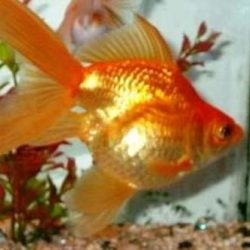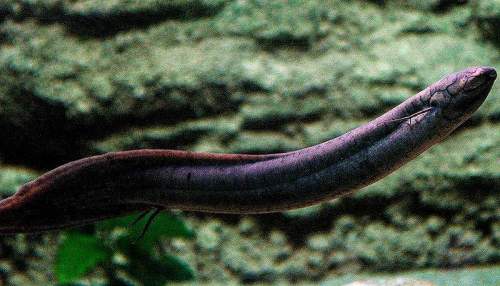Home › South American lungfish – Lepidosiren paradoxa
Taxonomy of South American lungfish
- Species: paradoxa
- Genus: Lepidosiren
- Family: Lepidosirenidae (Aestivating lungfishes)
- Order: Lepidosireniformes (South American and African lungfishes)
- Class: Sarcopterygii (lobe-finned fishes)
- Subphylum: Vertebrata
- Phylum: Chordata
- Kingdom: Animalia
Scientific name
Lepidosiren paradoxa Fitzinger, 1837
Synonyms of Lepidosiren paradoxa
Lepidosiren articulata Ehlers, 1894
Common names of Lepidosiren paradoxa
English: South American lungfish, Amazonian lungfish, Scaly salamander-fish, American mud-fish
French Creole: Anguille tété
Chinese: 南美肺魚, 南美肺鱼
German: Lurchfisch, Südamerikanischer Lungenfisch
Russian: Amerikanskiy cheshuichatnik, чешуйчатик американский
Ecosystem
Freshwater; stagnant waters and deep pools with aquatic vegetation; demersal; Sub-tropical; temperature range: 24°C – 28°C; endemic to South America, occurring in Amazon, Paraguay and lower Paraná River basins. Native of Argentina, Bolivia, Brazil, Colombia, French Guiana, Paraguay, Peru, Venezuela.
Size range
maximum 1.25 m in length; recorded age 8 years;
Feeding habits
lungfish essentially omnivorous; fishes, worms, mollusks, shrimps, insects and insect larvae; also plant material, benthic algae, weeds and detritus;
Reproduction
dioecism; external fertilization; rainy season; build nest and guard the eggs; paternal parental care; hatchlings have four external gills;
Conservation Status
IUCN Red List Status: Not Evaluated
Threat to humans: harmless
Image source: https://commons.wikimedia.org/wiki/File:Lepidosiren_paradoxa_0.jpg
Image author: OpenCage | License: CC BY-SA 2.5
Current topic in Aquarium fish pictures: South American lungfish quick facts


